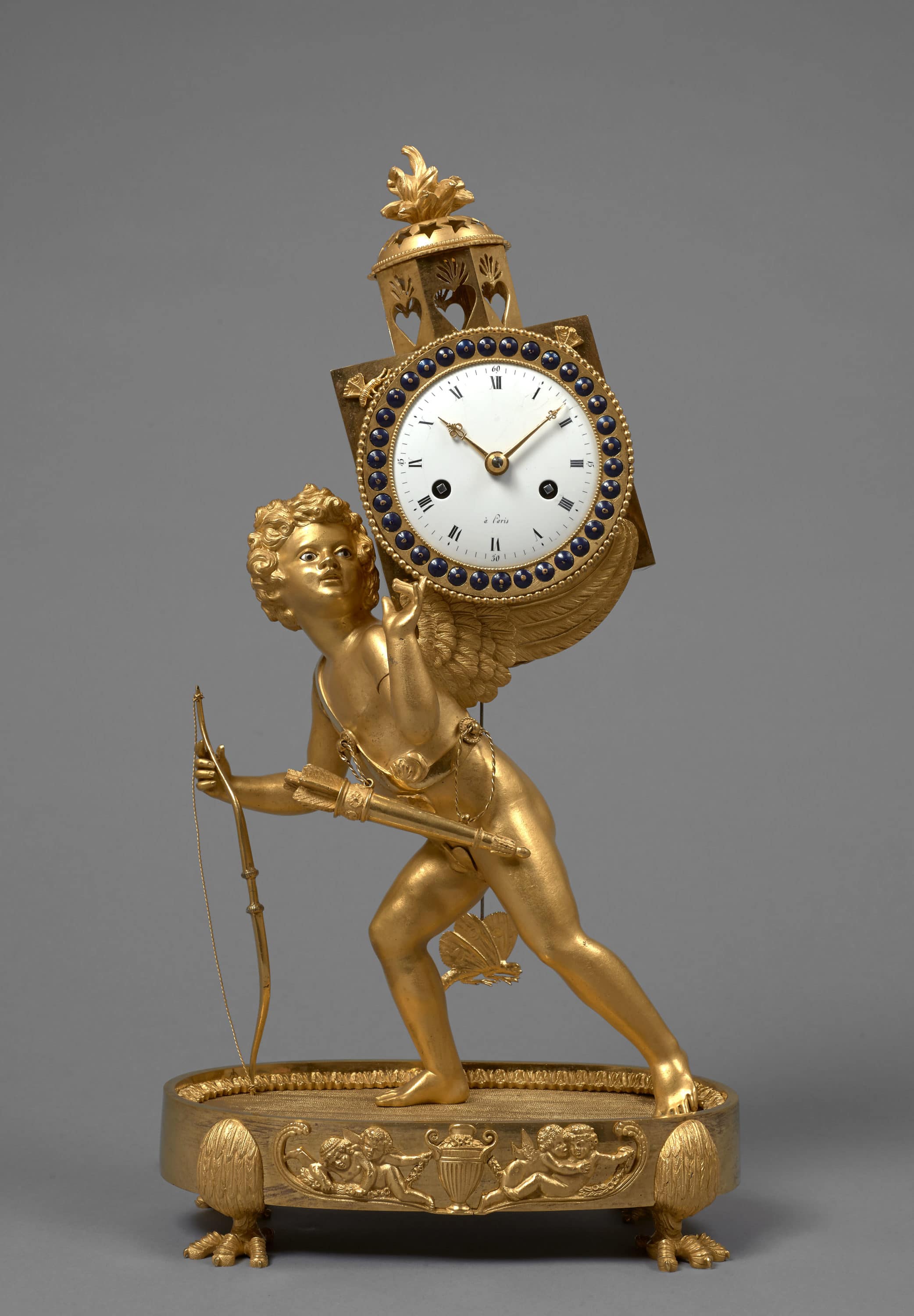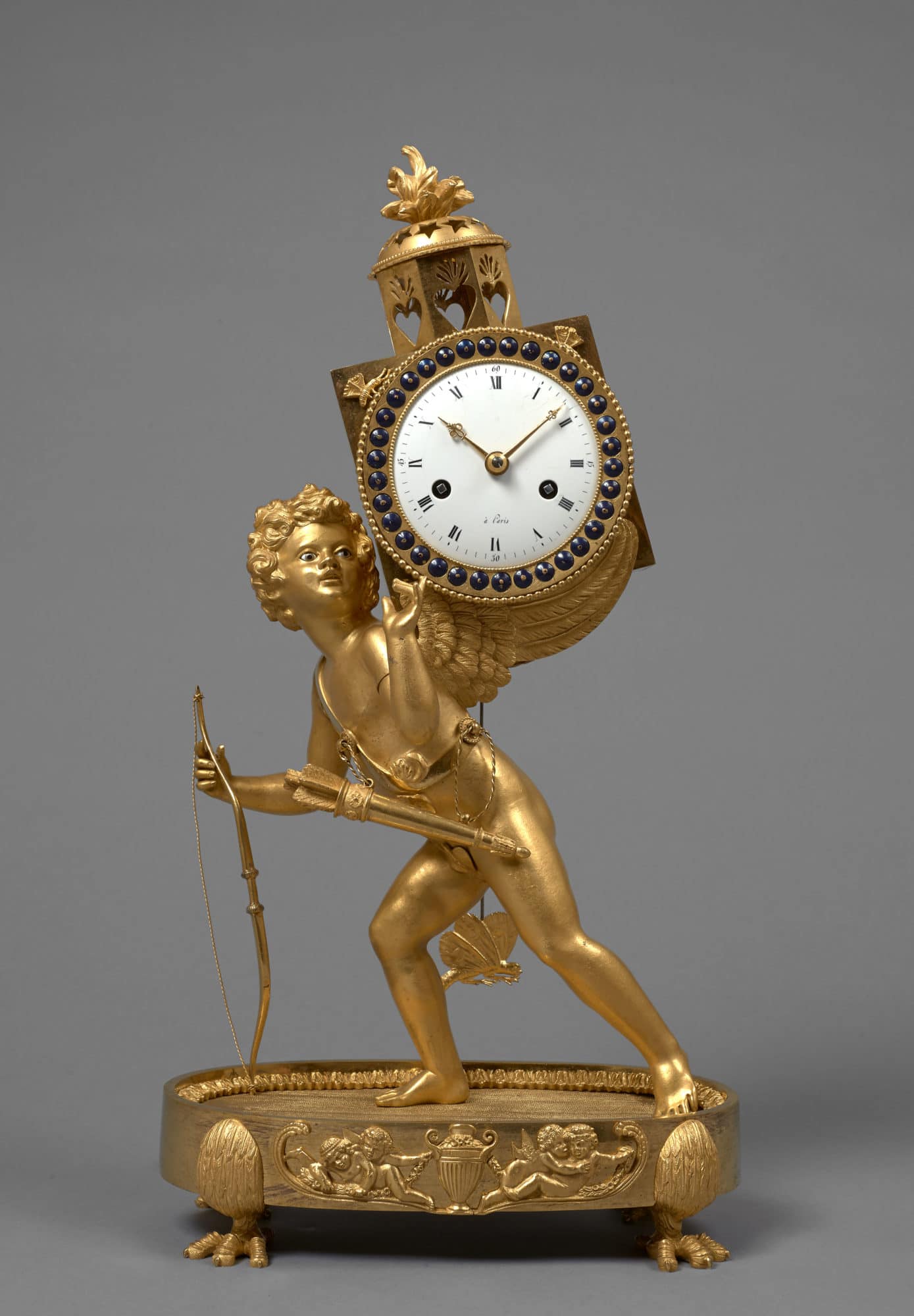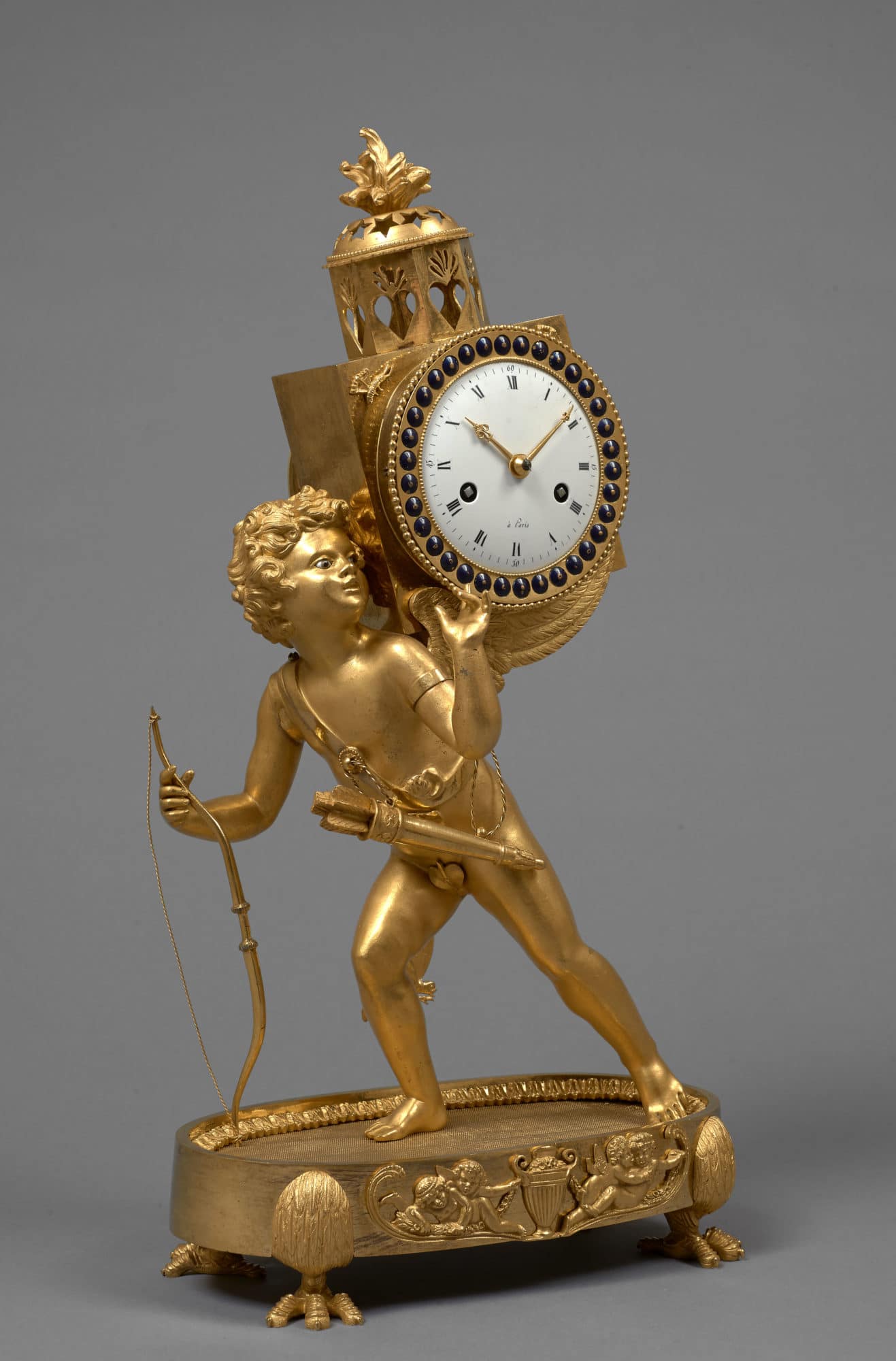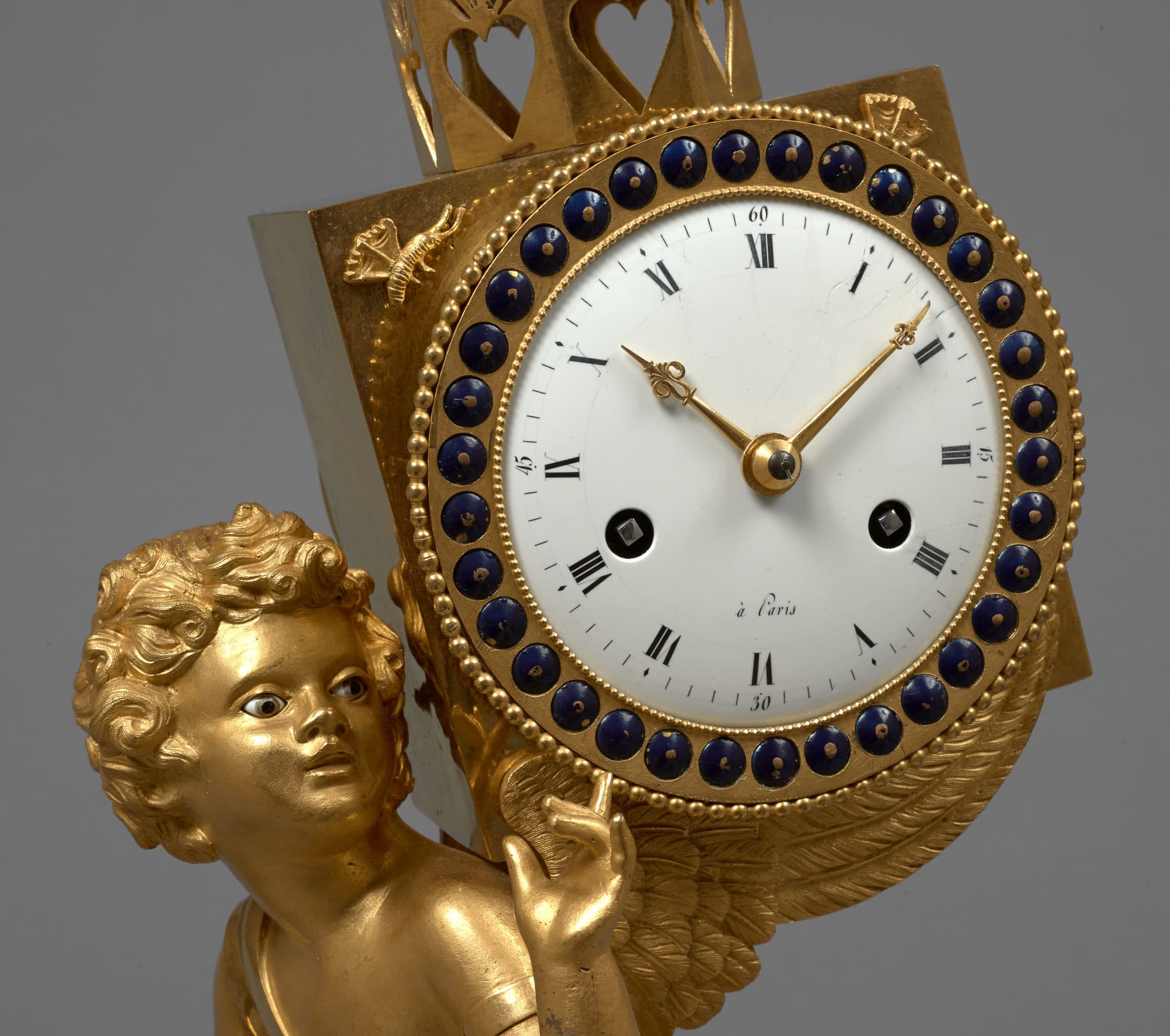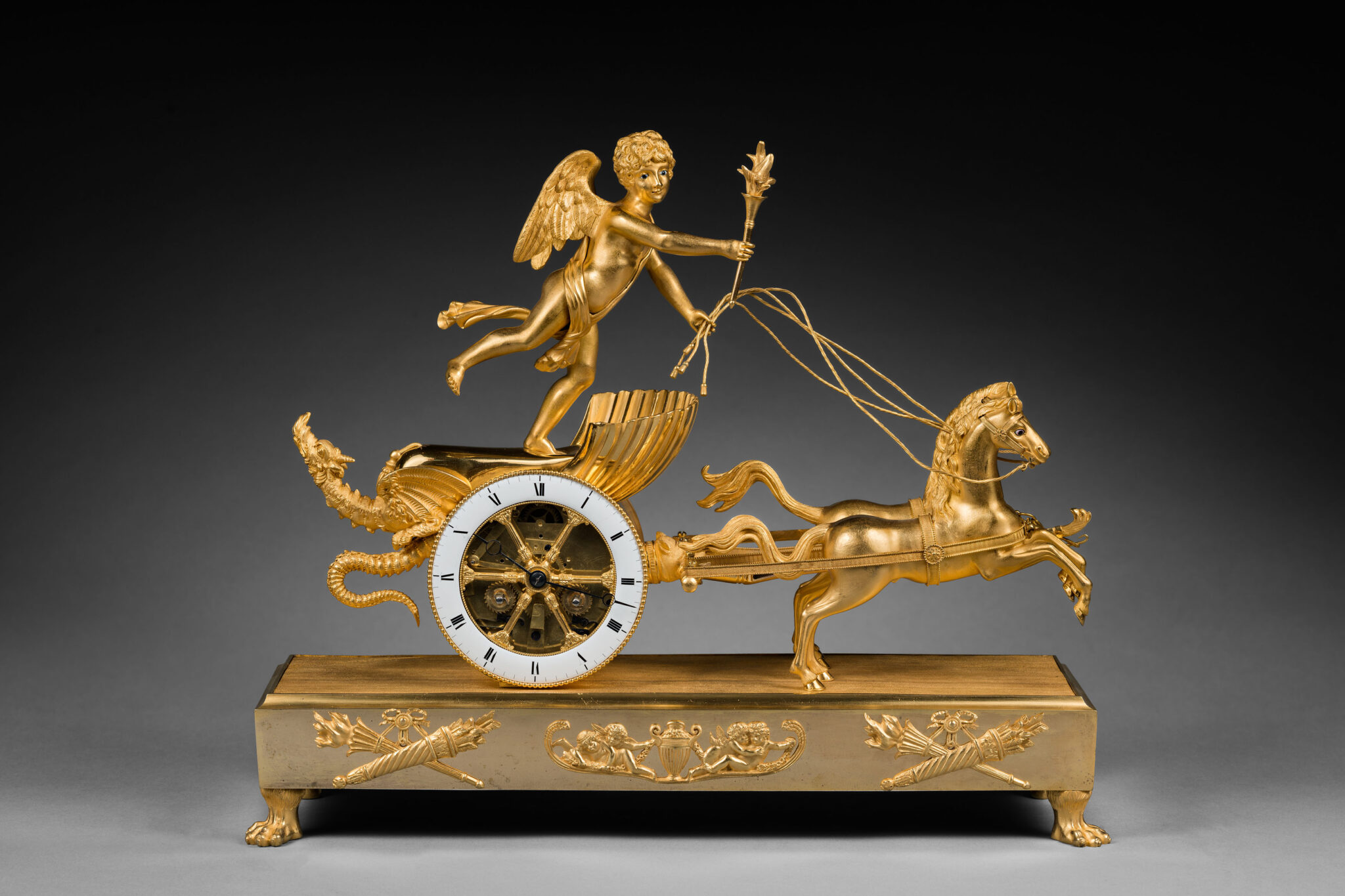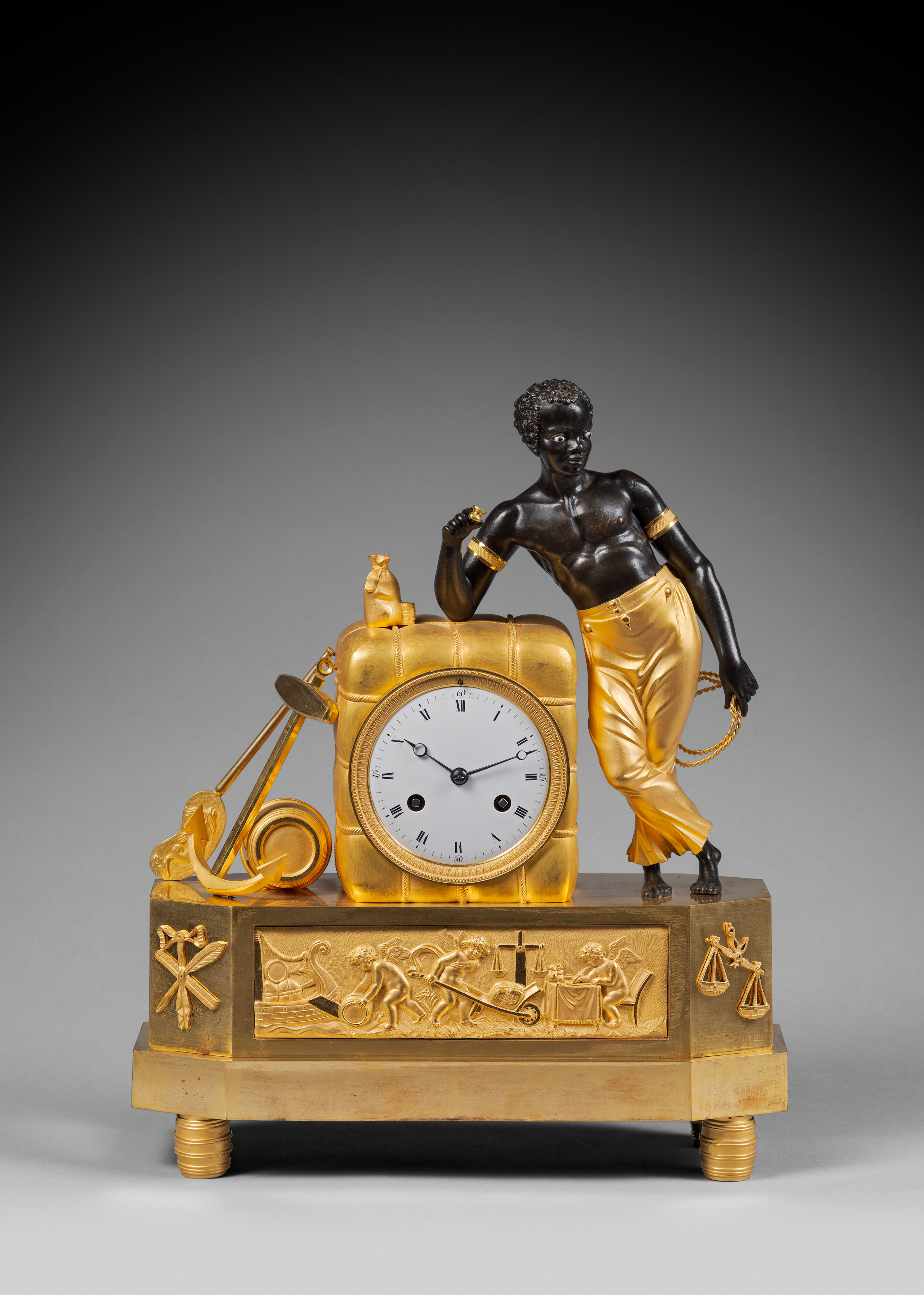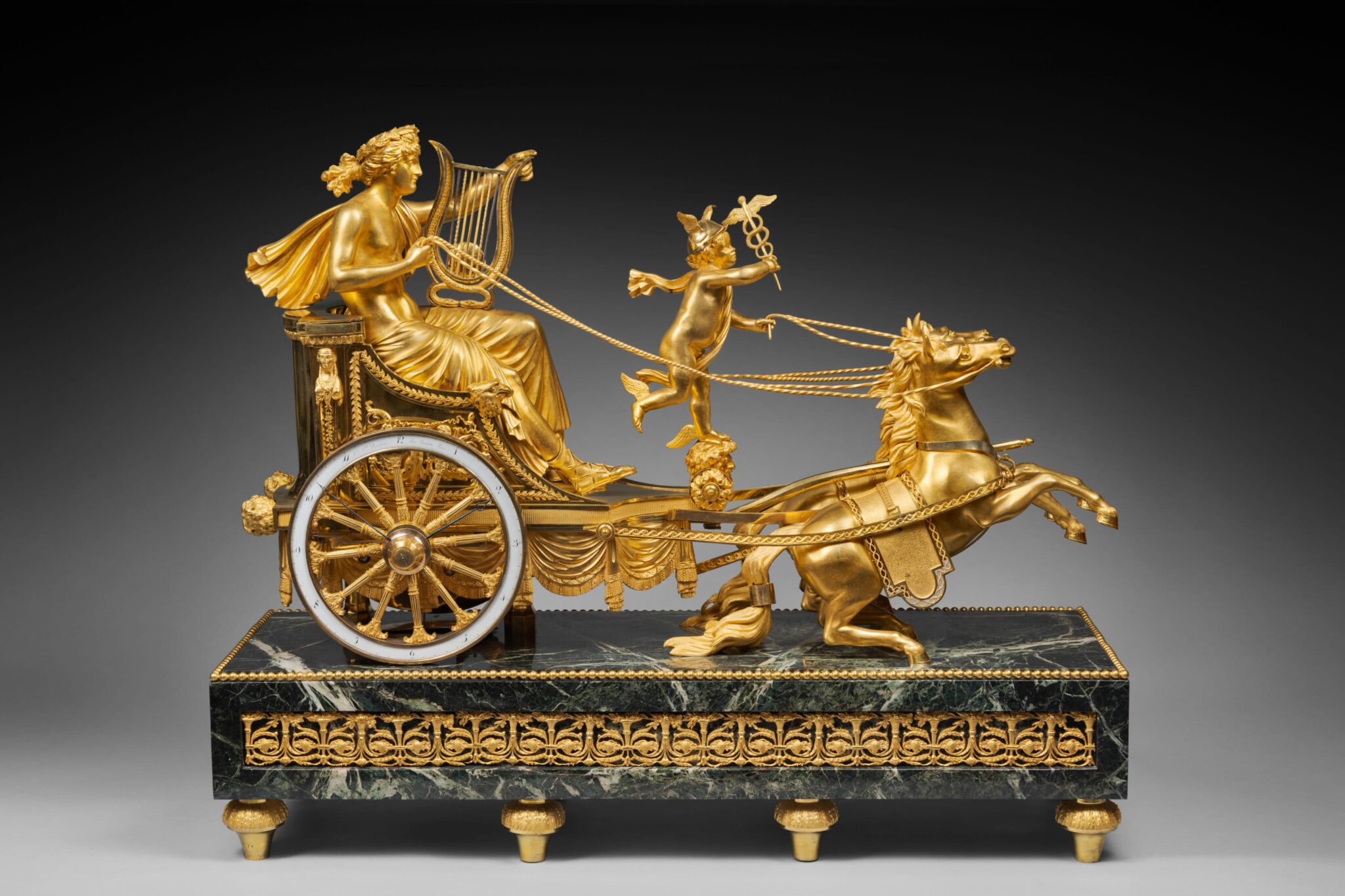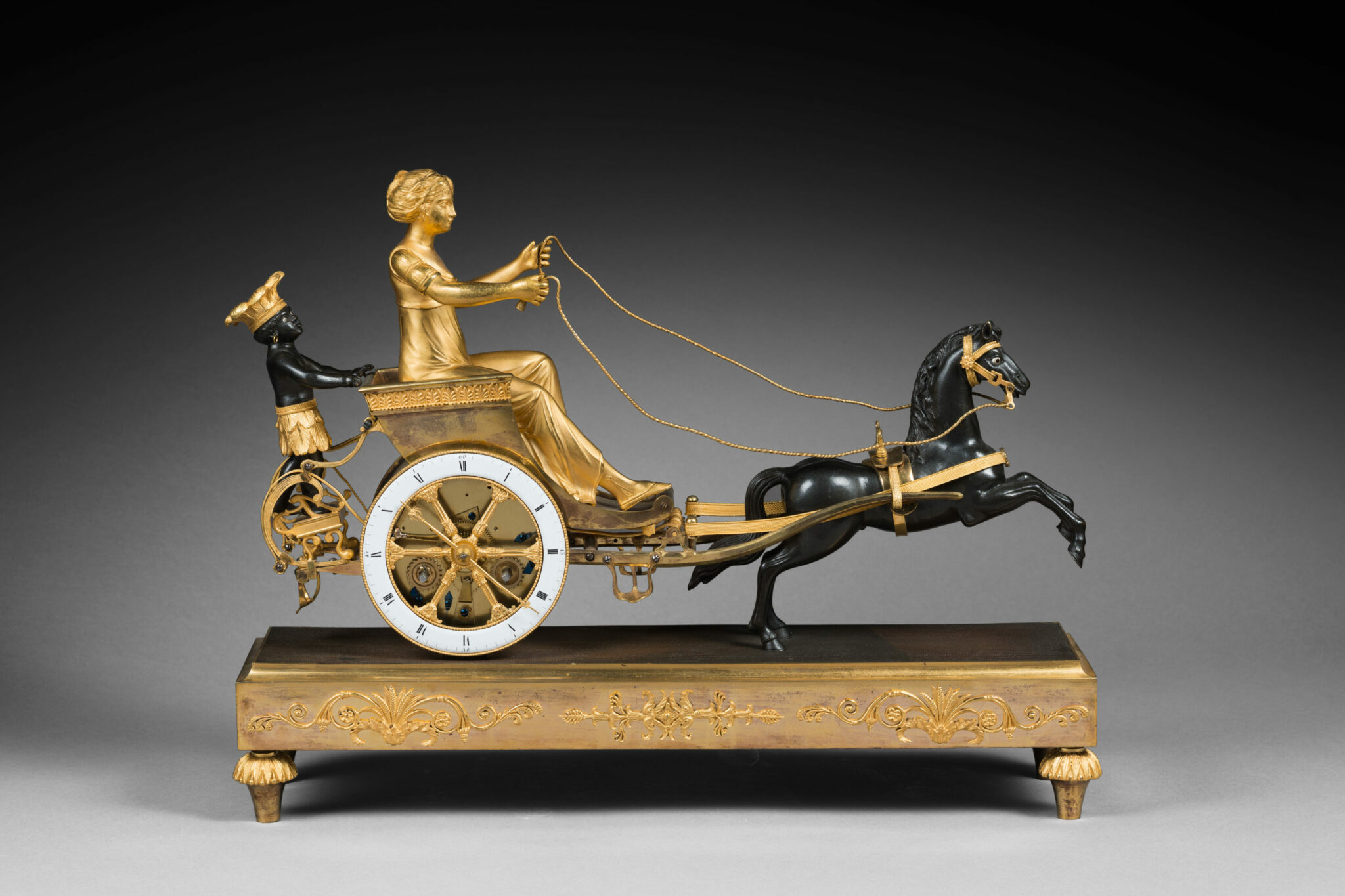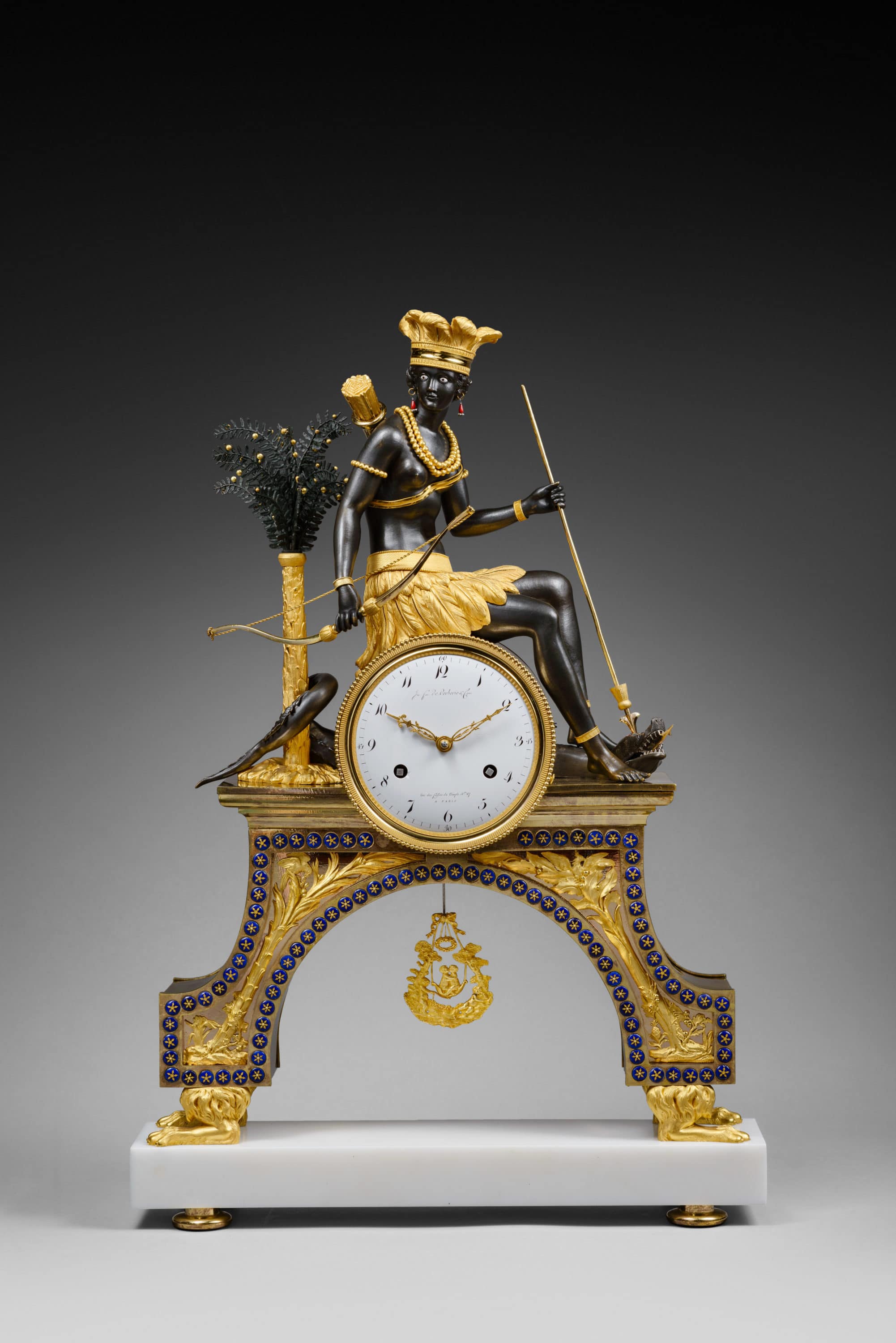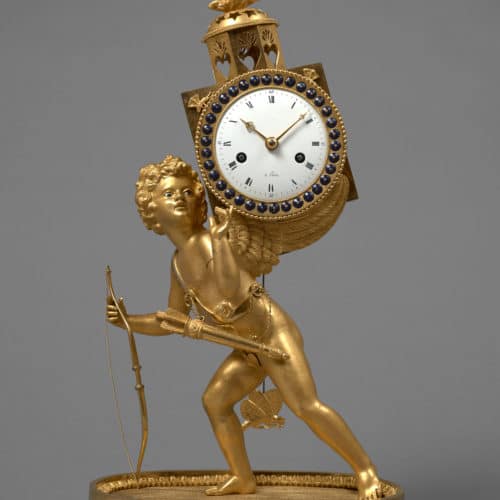Gilt Bronze Mantel Clock
“The Magic Lantern”
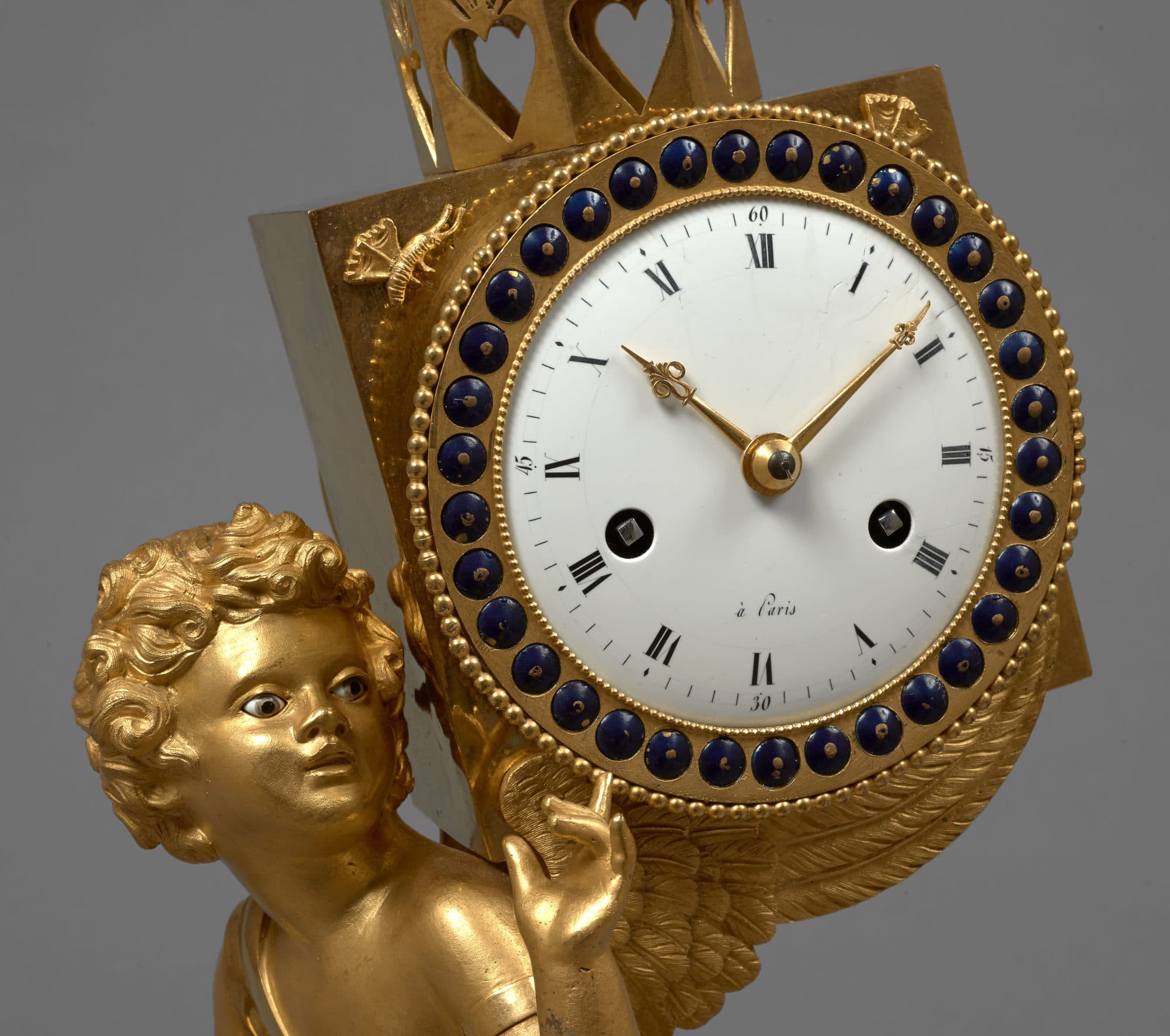
Case attributed to Jean-Simon Deverberie (1764-1824)
Paris, Empire period, circa 1800
An extremely fine gilt bronze mantle clock of eight-day duration, the white enamel dial with Roman and Arabic numerals and gilt bronze hands for the hours and minutes. The movement, with lever escapement and silk thread suspension, strikes the hour and half hour, with outside count wheel.
The case, in the form of a magic lantern, has a beaded bezel and is decorated with blue enamel rosettes; it is surmounted by a flaming torch pierced with stars and hearts. The pendulum bob is formed as a butterfly. The magic lantern is carried on the back of a striding Cupid with enamel eyes who carries a quiver of arrows and a bow. He stands on an oval plinth, featuring a cast frieze with winged putti playing around a central vase, is raised on feathered eagle’s claw feet.
Discover our entire collection of antique mantel clocks for sale online or at the gallery.
A clock with a very similar case, but with a patinated bronze Cupid, is illustrated in Pierre Kjellberg, Encyclopédie de la Pendule Française du Moyen Age au XXe Siècle, 1997, p. 447, pl. D. An almost identical gilt bronze clock whose dial is signed “Pinart à L’Orient” is illustrated in Elke Niehüser, Die Französische Bronzeuhr, Eine Typologie der Figürlichen Darstellungen, 1997: detail shot on the front cover; p. 129, colour pl. 210, and p. 230, pl. 658. An almost identical clock case is pictured in the undated catalogue of the François Duesberg museum, p. 38.
“Magic Lantern” clocks almost certainly derive from the prints, drawings, and statuettes showing travelling lanternists that circulated during the 19th century. Magic lantern shows, which had become very successful as of the late 18th century, included a range of slides, including comic and historical images and even topographical views. The age of the travelling lanternist came to an end once inexpensive lanterns for home use began to be offered.
The magic lantern was invented around the mid 17th century, most probably by Christiaan Huygens (1629-95). It was an early form of slide projector, consisting of a domed top and rectangular box in which a candle or oil lamp was placed. The slides were placed before a lens and lit by a light source, so that they were projected onto a wall or a sheet.
The design of the present case, however, in which Cupid points to the dial, suggests an interesting interpretation: perhaps he means to indicate that Time – or possibly Love itself – is merely an illusion. Further references to Love are provided by the pierced hearts around the lantern top and the flaming torch.
Jean-Simon Deverberie (1764 - 1824)
Jean-Simon Deverberie was one of the most important Parisian bronziers of the late 18th century and the early decades of the following century. Deverberie, who was married to Marie-Louise Veron, appears to have specialized at first in making clocks and candelabra that were adorned with exotic figures, and particularly African figures. Around 1800 he registered several preparatory designs for “au nègre” clocks, including the “Africa”, “America”, and “Indian Man and Woman” models (the drawings for which are today preserved in the Cabinet des Estampes in the Bibliothèque nationale in Paris). He opened a workshop in the rue Barbette around 1800, in the rue du Temple around 1804, and in the rue des Fossés du Temple between 1812 and 1820.
